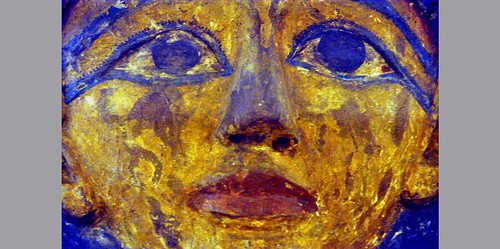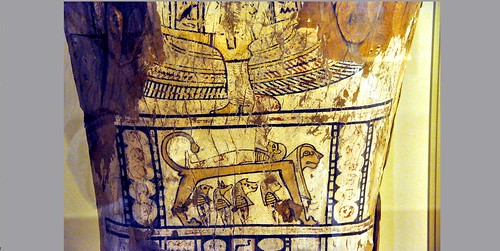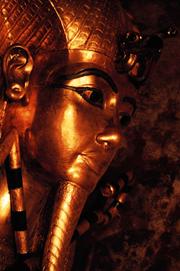| |
Galeria de Hans Ollermann
2009_0812_133022AA Budapest 2009

Ancient Egyptian .coffins from Gamhud.
Ptolemaic Period.
Szépmüvészeti Múzeum (Museum of Fine Arts), Budapest.
Comentários

Ancient Egyptian .coffins from Gamhud.
Ptolemaic Period.
Szépmüvészeti Múzeum (Museum of Fine Arts), Budapest.
Comentários
Djedhuti  disse:
disse:
Hi, I'm an admin for a group called Strictly Ptolemaic, and we'd love to have this added to the group!
Postado 8 meses atrás. ( permalink )

Ancient Egyptian .coffins from Gamhud.
Ptolemaic Period.
Szépmüvészeti Múzeum (Museum of Fine Arts), Budapest.
Comentários
Djedhuti  disse:
disse:
Hi, I'm an admin for a group called Strictly Ptolemaic, and we'd love to have this added to the group!
Postado 8 meses atrás. ( permalink )
2009_0812_133143AA Budapest 2009

Ancient Egyptian .coffins from Gamhud.
Ptolemaic Period.
Szépmüvészeti Múzeum (Museum of Fine Arts), Budapest.
Comentários
moocatmoocat  disse:
disse:
interesting
--
Seen in my contacts' photos. (?)
Postado 8 meses atrás. ( permalink )
Djedhuti  disse:
disse:
Hi, I'm an admin for a group called Strictly Ptolemaic, and we'd love to have this added to the group!
Postado 8 meses atrás. ( permalink )
Hola a tod@s;
Como no podía ser de otra manera, si hasta ahora teníamos la cara sobre " el asunto de Tut " en la versión publicada en JAMA, en el siguiente link: www.nature.com/news/2010/100216/full/news.2010.75.html tenemos la cruz que nos ofrece NATURE.
Que cada cual saque sus conclusiones.
Un saludo a tod@s
Joan Arroyo i Suau
King Tut's death explained?
Experts question claims that malaria and osteonecrosis contributed to Pharaoh's decline.

Pete Turner/Stone/Getty Images
A research team says it has solved the mystery surrounding the death of the Egyptian boy-king Tutankhamun, who died in about 1324 B.C. at the age of 19. Some outside experts contacted by Nature, however, are sceptical, saying that the paper's conclusions overstep its data.
Genetic fingerprinting done on Tutankhamun, commonly known as King Tut, and ten other mummies also yielded a putative five-generation family tree that includes King Tut's parents.
"The paper is of importance since it deals with the most famous of Egyptian mummies. However, most of the results are predictable," says Frank Rühli of the Institute of Anatomy at the University of Zurich in Switzerland and joint head of the Swiss Mummy Project.
Imaging results in the report, published today in the Journal of the American Medical Association, indicate that Tutankhamun had osteonecrosis of two metatarsal bones in one foot, according to the authors, and DNA evidence suggests that he was infected with the malaria parasite Plasmodium falciparum1. The team behind the work, led by Zahi Hawass, head of Egypt's Supreme Council of Antiquities in Cairo, thinks that King Tut may have weakened and died from some combination of these conditions — especially considering that he also had a fractured leg2, an injury perhaps sustained as a result of his foot problems.
But other experts argue that finding evidence of malaria is unsurprising, given that the parasite was probably common in Egypt at the time. Moreover, in malarious regions people who survive the disease in childhood often acquire partial immunity that protects them against full-blown malaria later in life. The lack of internal organs in mummies makes a definitive diagnosis impossible. "No data are available to assess that malaria was the cause of death," says Giuseppe Novelli, head of the medical genetics lab at Tor Vergata University of Rome.
The authors also believe that the malaria finding is "the oldest genetic proof for malaria in precisely dated mummies". Experts say this is no big deal, however, as mummies thought to be from this period and earlier have already been shown to have had P. falciparum malaria3,4. Moreover, changes in the human genome that have been attributed to malaria's influence show that the disease has been around since ancient times5.
Differential diagnosis
The damage to King Tut's foot may also be open to alternative explanation, experts say. A diagnosis of necrosis cannot clearly be made from the published images, says Gino Fornaciari, director of palaeopathology at the University of Pisa in Italy, adding that it could be secondary to malaria. Philippe Charlier, a forensic scientist at Raymond Poincaré Hospital in Garches, near Paris, agrees that a misdiagnosis can't be ruled out, saying that the observed necrosis could be the result of "burning or crushing by embalming salts or bitumen". Other foot deformities reported in the paper may well also be due to bandaging and embalming, says Fornaciari.
In support of their hypothesis, the authors argue that the presence of canes in King Tut's tomb supports his having had a walking impairment, and that seeds, fruits and leaves found there may have been an "afterlife pharmacy" to help treat King Tut's ailments after death. Fornaciari argues that canes were often used in ancient Egypt and other eastern cultures as a symbol of power. Seeds, fruits and leaves, meanwhile, are found in tombs as 'grave goods' for the afterlife, and are not necessarily medical treatments, says Charlier.
“We will never be able to prove he died from malaria.”
Albert Zink
Institute for Mummies and the Iceman
"We will never be able to prove he died from malaria," admits co-author Albert Zink1, head of the Institute for Mummies and the Iceman at EURAC (European Academy Bozen/Bolzano) in Bolzano, Italy, although the evidence of the malaria parasite raises the possibility. Zink says that he is sure of the osteonecrosis diagnosis, arguing that new bone growth in reaction to the necrosis shows that it occurred before death. Osteonecrosis alone is not fatal but could have been a contributing factor to King Tut's demise, he says.
Zink agrees that the alternative explanations for the canes and plant materials are possible, but says that the therapeutic use of canes, and the presence of botanical products typically used to treat fever, provides circumstantial evidence worth reporting. He rejects suggestions that the group overstated its data, but agrees that the paper's assertions on the cause of death are ultimately speculative.
ADVERTISEMENT
The leg fracture, reported last year2 by a group including Rühli and Hawass, could alone account for death, possibly as a result of infection, Rühli says.
The genetic fingerprinting of the royal mummies and the resulting family tree is more convincing than the suggested causes of King Tut's death, although most researchers agree that the details provided in the paper do not allow for a full assessment. Eske Willerslev, an expert in ancient DNA at the University of Copenhagen and co-author on a paper published last week in Nature reporting the oldest human genome sequenced so far6, says he's not convinced by the fingerprinting data.
Rühli, who last year co-authored a meta-analysis of palaeopathological studies of ancient Egyptian mummies7 and is preparing a book on proposed minimum standards for publication says that despite the criticisms the researchers deserve credit. He points out that evaluating pathologies in ancient mummies is notoriously difficult because of the confounding effects of embalming and time, and because most of the internal organs are missing. He adds that the study itself is scientifically rigorous in a field in which many publications have often been of poor quality. The presentation of the results, however, may be a bit "exaggerated" he concludes.
-
References
- Hawass, Z. et al. J. Am. Med. Assoc. 303, 638-647 (2010). | Article
- Hawass, Z. et al. Ann. Serv. Antiq. Egypt. 81, 159-174 (2009).
- Nerlich, A. G., Schraut, B., Dittrich, S., Jelinek, T. & Zink, A. R. Emerg. Infect. Dis.2008). doi:10.3201/eid1408.080235 (
- Bianucci, R. et al. J. Archaeol. Sci. 35, 1880-1885 (2008).
- Kwiatkowski, D. P. Am. J. Hum. Genet. 77, 171-192 (2005). | Article | PubMed | ISI | ChemPort |
- Rasmussen, M. et al. Nature 463, 757-762 (2010). | Article | PubMed
- Zweifel, L., Bünib, Th. & Rühli, F. J. HOMO — J. Comp. Hum. Biol. 60, 405-427 (2009).
If you find something abusive or inappropriate or which does not otherwise comply with our Terms or Community Guidelines, please select the relevant 'Report this comment' link.
Comments on this thread are vetted after posting.
- #9520
See Nov '09 New Yorker for a lengthy but not flattering article on paper's author, Dr. Hawass. Fairly sure same person.
- Report this comment
- 2010-02-18 05:51:33 PM
- Posted by: shane miller
Note that Mark Rose, online editorial director of the American Institute of Archeology has serious doubts about the identification of mummy KV55 as Akhenaten (www.archaeology.org/online/features/tutdna). He states that this mummy died died in the 20's while Akhenaten must have been in his 30's at death. He suggest that KV55 may be Tut's brother and may be Smenkhkare. Tut's mother still may be Kiya, a secondary wife of Akhenaten, but, if so, her origin cannot be as foreign as once thought. More details at the website cited.
- Report this comment
- 2010-02-19 09:31:20 AM
- Posted by: Diana Gainer
##########################################
RSS Feed de Amigos de la Egiptología
http://www.egiptologia.com/index.php?format=feed&TYPE=rss
##########################################
Todo sobre Tutankhamon http://www.egiptologia.com/todo-sobre-tutankhamon.html
Recomendamos: Arqueología http://www.arqueologos.org





![S29 [s] s](http://es.wikipedia.org/w/extensions/wikihiero/img/hiero_S29.png)
![D58 [b] b](http://es.wikipedia.org/w/extensions/wikihiero/img/hiero_D58.png)









![M17 [i] i](http://es.wikipedia.org/w/extensions/wikihiero/img/hiero_M17.png)
![Y5 [mn] mn](http://es.wikipedia.org/w/extensions/wikihiero/img/hiero_Y5.png)
![N35 [n] n](http://es.wikipedia.org/w/extensions/wikihiero/img/hiero_N35.png)





![N5 [ra] ra](http://en.wikipedia.org/w/extensions/wikihiero/img/hiero_N5.png)
![F35 [nfr] nfr](http://en.wikipedia.org/w/extensions/wikihiero/img/hiero_F35.png)
![D28 [kA] kA](http://en.wikipedia.org/w/extensions/wikihiero/img/hiero_D28.png)

![M8 [SA] SA](http://en.wikipedia.org/w/extensions/wikihiero/img/hiero_M8.png)


![S29 [s] s](http://en.wikipedia.org/w/extensions/wikihiero/img/hiero_S29.png)
![D58 [b] b](http://en.wikipedia.org/w/extensions/wikihiero/img/hiero_D58.png)
![N29 [q] q](http://en.wikipedia.org/w/extensions/wikihiero/img/hiero_N29.png)










Djedhuti disse:
disse:
Hi, I'm an admin for a group called Strictly Ptolemaic, and we'd love to have this added to the group!
Postado 8 meses atrás. ( permalink )
2009_0812_133113AA Budapest 2009
Ancient Egyptian .coffins from Gamhud.
Ptolemaic Period.
Szépmüvészeti Múzeum (Museum of Fine Arts), Budapest.
Comentários
Djedhuti disse:
disse:
Hi, I'm an admin for a group called Strictly Ptolemaic, and we'd love to have this added to the group!
Postado 8 meses atrás. ( permalink )